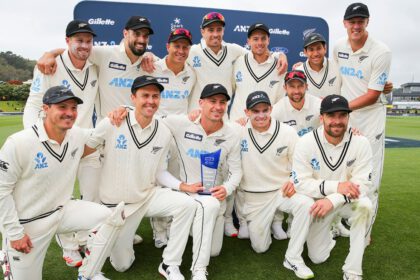Australia and India: A Classic in Times of Pandemic
In a year marked by the Covid-19 pandemic, Australia and India prepare to face each other on the same stage where they began their last encounter in 2018: the Adelaide Oval. The presence of the iconic scoreboard and the Moreton Bay trees at the north end of the field provide a sense of continuity, an essential element in Test cricket, and will serve as a backdrop for the teams led by Tim Paine and Virat Kohli in the first day/night Test for the Indian team away from home. This encounter between two of the most powerful cricket nations promises to be memorable, especially considering the challenges they faced to make the series happen. From March to May, when the sport practically stopped, the uncertainty about the realization of the series was palpable. The obstacles to carrying out the matches were significant, although there was a good relationship between Cricket Australia and the Board of Control for Cricket in India (BCCI). CA’s interim chief executive Nick Hockley and chairman Earl Eddings had to overcome the challenge of finding a port of entry for the charter plane carrying the visiting team. Initial plans to land in Perth were modified, considering Adelaide and then Brisbane, before finally Sydney, Canberra, the New South Wales government and the SCG Trust took the lead. Negotiations with the Queensland government also generated anxiety. Even after the arrival of the Indians, a Covid outbreak in Adelaide threatened to disrupt the series. Adelaide Oval was on the verge of hosting at least one Test, and even two, due to the lockdown in Melbourne. Adelaide Oval curator Damian Hough has had to adapt to rock concerts and changes in football matches, but this year, he prepared the pitch for a Test match with a Christmas parade instead of Sheffield Shield games.Hough added that the practice sessions in the center of the field provide a crucial competitive advantage for Australian players. Australian captain Tim Paine emphasized the importance of these training sessions. “We have been fortunate to arrive early in Adelaide,” he said. “We trained three nights in a row in the center of the field at the Adelaide Oval, which I think will be a great advantage for our team. It’s the most difficult thing about the Test with the pink ball; you usually have it once a year. Sometimes with a Shield game, this time without one. So you’re practically learning on the fly, in real time, when you go out on the field.” Kohli’s adaptation, who did not participate in the practice match at the SCG, will be crucial for the result in Adelaide. Furthermore, this will be Kohli’s only Test in the series, as Ajinkya Rahane will take over for the remaining three matches. With an attack of bowlers like Pat Cummins, Josh Hazlewood, Mitchell Starc, and Nathan Lyon, the Australians have succeeded in limiting Kohli in the previous two series. However, if they manage to overcome that phase, Kohli has shown that he can cause damage even to the most formidable attack. Paine acknowledged Kohli’s quality and the need for an effective plan. “Obviously, we have plans that have worked well against him in the past; hopefully they work early enough this week, but if not, we have a couple of different plans. The good thing with our attack is that everyone is different, we also have Nathan Lyon and now you include Greeny, we have different angles, different speeds and obviously Nathan’s spin, as well as Marnus’, so we have a lot of different options to throw at him if he gets in and settles”. Paine, who values his Test career more than many, shows no signs of “bubble fatigue”. “Absolutely not. I love it, to be honest,” Paine said. “I don’t think this concentration center has been as strict as perhaps the IPL or England’s. I sleep very well at night; my children are at home, which is good in a way, but I certainly miss them. But I sleep better here and feel fresher here than at home, so life in the concentration center might make me play longer, if anything.” The events of 2020 have ensured that this last chapter is as vivid as any sporting competition, especially at a time when many around the world remain confined by the pandemic.“One thing we’ve learned with Covid is to be more in the present. We like to plan months in advance. We still had plans, but we had to live a little more in the moment,” Hough commented.
Damian Hough









